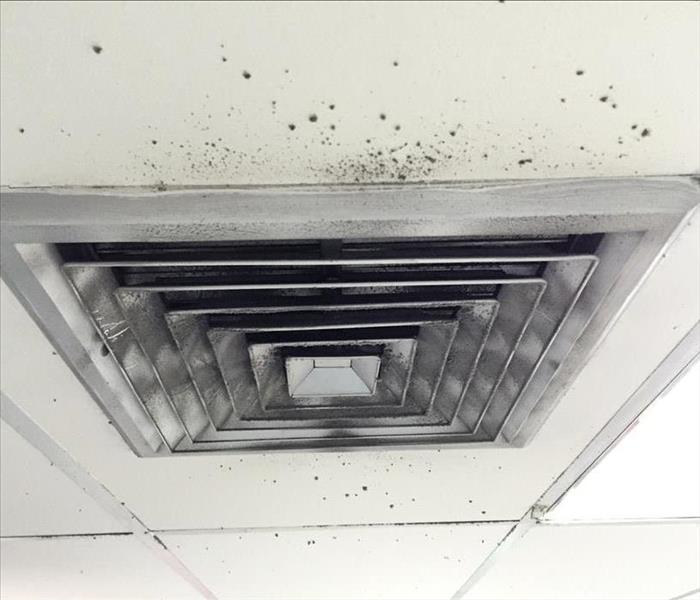Mold Growth in HVAC Ductwork
7/24/2019 (Permalink)
Unfortunately, you may have mold growth in your Oklahoma City, OK, business without even realizing it. Because the inside of ductwork is not readily visible, black mold growing in air ducts frequently goes unnoticed.
Identifying Mold Growth
Even if you do not see the mold inside the ducts, there will usually be other signs that you have a problem. These include:
- A musty smell, especially when running the air conditioning
- Black dust on vents
- Health issues, such as coughing, headaches and nausea, that are not explained by seasonal allergies or other health conditions
Treating Mold Growth
When mold is growing in air ducts, it can be especially tricky to remediate. You may wish to contact mold remediation experts to help you get the problem under control. Although every situation varies, the general process for treating mold follows a similar pattern: identify the type and extent of mold damage, take apart and clean ducts and replace surrounding insulation if necessary. In every case, it is important to identify the cause of mold growth and address it so that the mold does not come back.
Preventing Mold Growth
Black mold, like many other molds, needs moisture and organic material to thrive. Unfortunately, air ducts provide both water and dust to nourish the mold and air flow to circulate the spores. This makes it easy for mold to grow quickly. Having ductwork regularly cleaned and maintained cuts down on the amount of dust and water available to sustain a mold colony. Routinely changing the filter in your HVAC unit is generally a simple procedure and goes a long way toward reducing dust accumulation and lowering the chances of a mold infestation. Your HVAC technician can show you how to change the filter and advise you of how frequently to do so.
Black mold in the ductwork of your Oklahoma City, OK, business is an unsettling thought. However, routine maintenance can mitigate any mold growth you may have and hopefully prevent the growth altogether.






 24/7 Emergency Service
24/7 Emergency Service
